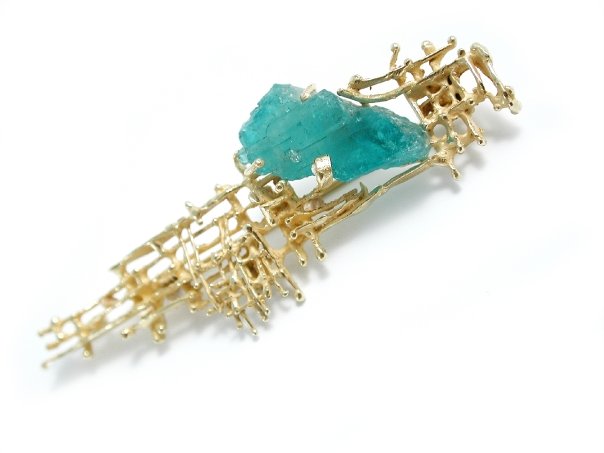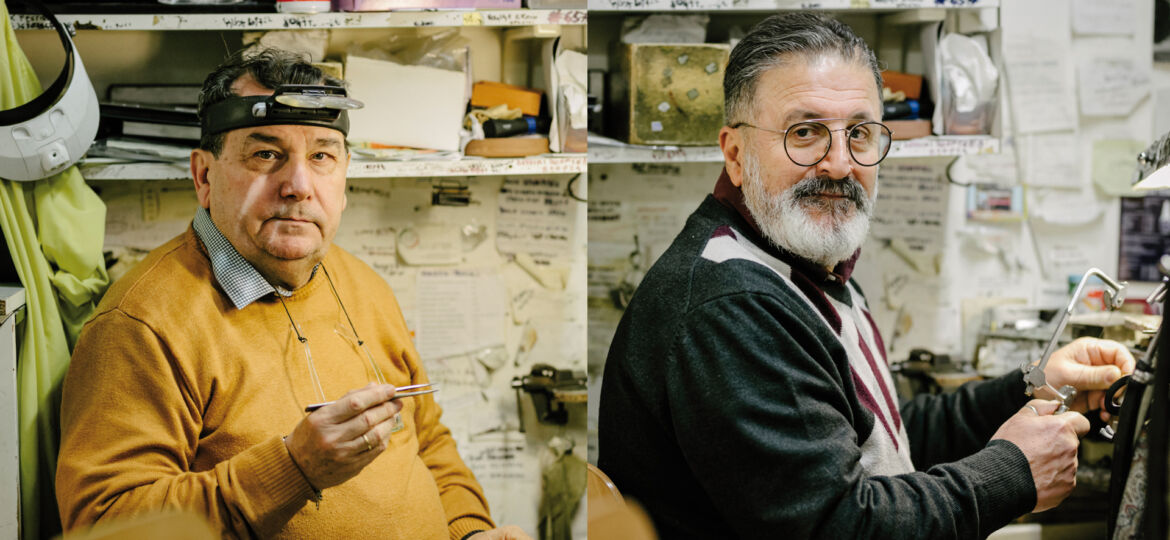
The magic of wonderful little wearable sculptures that are born from incredible passion, ancient techniques of the goldsmith tradition and research in design.
Daniele Gaudenzi and Mauro Longhini: goldsmiths by genuine passion
Creating jewelry is a passion. It is difficult to explain what it means for an artisan to see them come to life starting with the design, and then to follow them as they evolve, step by step, piece by piece, smoothing them, polishing them, taking care of them in every detail, and finally seeing them worn.
Daniele Gaudenzi and Mauro Longhini told us about their own incurable love for the goldsmith’s art by letting us into their workshop, Studio A Tre, and showing us the magic they perform every day to bring to life accurate little sculptures to wear.
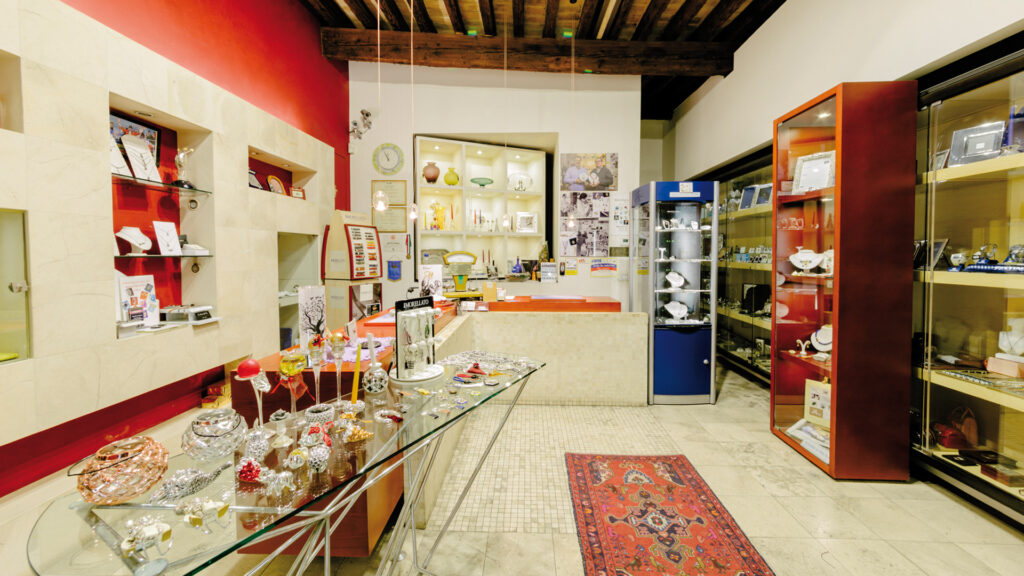
The goldsmith’s art is indeed a bit of magic, a mysterious combination of creativity and technique that gives substance to the most imaginative ideas and gives life to incredible precious objects. One need only think of a technique as ancient yet so contemporary in the effects it enables, such as cuttlebone casting, which is particularly dear to the Studio A Tre artisan workshop.
“Cuttlebone casting allows the natural striations of bone to be imprinted on the metal, simply by using the cuttlebone, divided into two perfectly smooth and matching parts, as a crucible in which to pour the molten metal.”
The result is incredible: waves, peculiar light-shadow effects, gloss and matte alternating and chasing each other, a kind of real visual and tactile vibration imprinted on the gold.
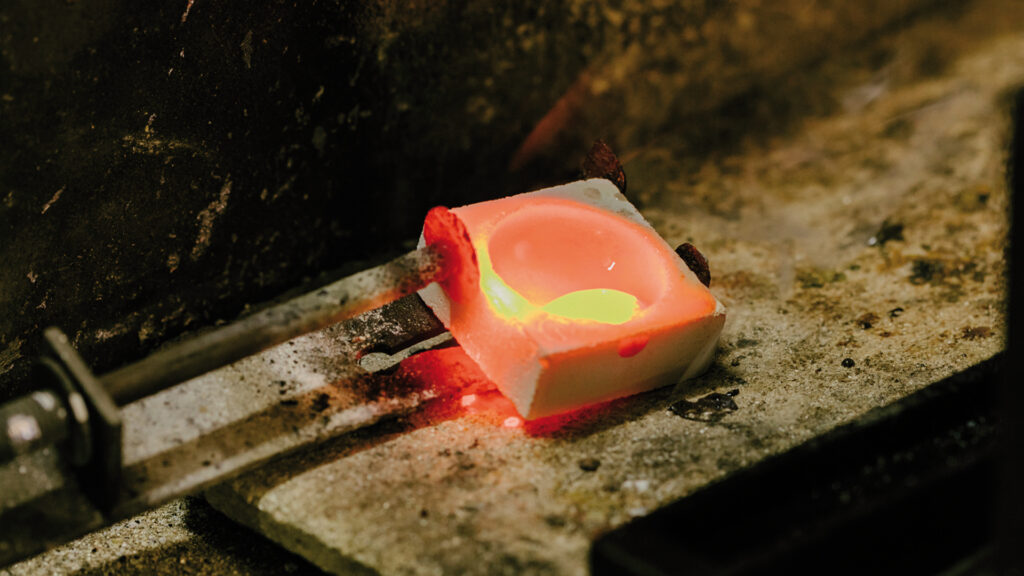
The main material for the jewelry made by Daniele Gaudenzi and Mauro Longhini isyellow gold
Why yellow gold? “For its warm hue. Yellow gold is inimitable in this sense. White gold is cool, it allows us to bring out the brightness of stones, especially diamonds. We use it in contrast to yellow gold, for example in pavé diamonds. But it is yellow gold that prevails, and that allows for results in terms of light effects that white gold does not allow. With yellow gold you can make one part of the jewel brushed, one polished, one opaque, giving the object those characteristics of movement, depth and differentiated luminescence typical of the jewel-sculpture.”
And what are you most passionate about making? Without hesitation, “The rings. We like the idea of a small sculpture to be worn on a hand. Often it also features just the gold, without the use of precious stones, with the light effects that distinguish our creativity and our way of creating jewelry, based on handwork.”
Yes, because What distinguishes a goldsmith’s craftsmanship is precisely this: “The originality of the idea, of the design, the extreme attention to detail that there is in handcrafted jewelry. The starting to create from the design, even a simple sketch sketched on a sheet of paper, which then evolves during the very work of producing the jewelry.”
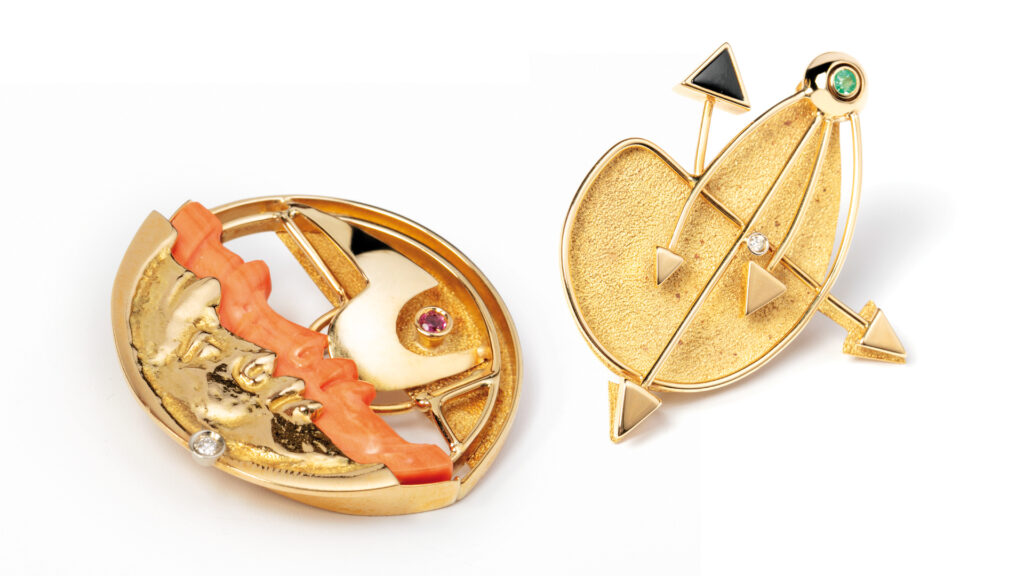
The manual technique that allows the creative flair to be unleashed and the skills and high craftsmanship to be maximized is the slab and wire technique: “Gold bars are pulled by plate or wire at the rolling mill, in different thicknesses and sizes, and what comes out are precisely gold plates and wires that give the craftsman endless possibilities, to make geometric shapes, imaginative weaves, without any limits.”
Not just simple gold plates and wires, then, but endless stimuli to the goldsmith’s inventiveness, basic elements to start dreaming and give substance to ideas.
The slab-and-wire technique involves the creation exclusively by hand of all parts of the jewelry, including bezels and very special stone housings, designed to enhance and amaze with gemstones and semi-precious stones, carefully chosen for their original natural color shades.
The slab-and-wire technique is thus a testimony and guarantee of the creation of a unique and exclusive piece. A modeling technique of great goldsmiths, a high creative and craftsmanship that in Studio A Tre is also the ability to translate tradition into contemporary design.
Contemporaneity for Daniele Gaudenzi and Mauro Longhini is first of all geometry. An interweaving of elegant lines, by light games that run through the jewelry and make it vibrant in the light, capable of surprising from every angle, even without the need to use precious stones, but attributing to theGold multiple finishes. Highly polished slabs of gold are transformed into reflective surfaces, alternating with hand-hammered, or often rough or sandblasted elements, in which the gold appears instead very different, grainy, as if it were shimmering with micropepits scattered across the sand.
Laura Ricci


